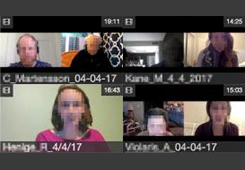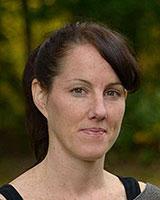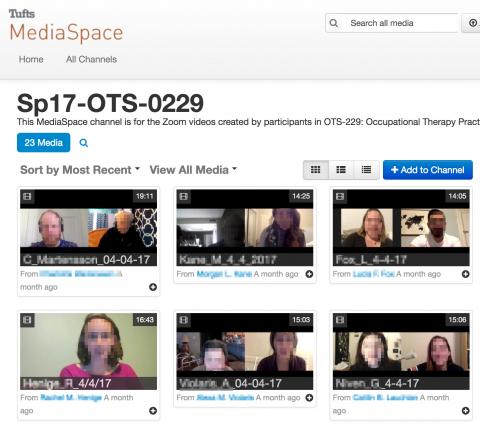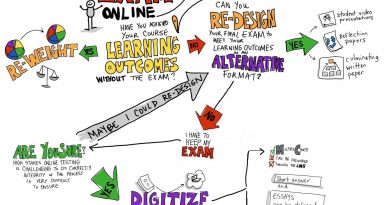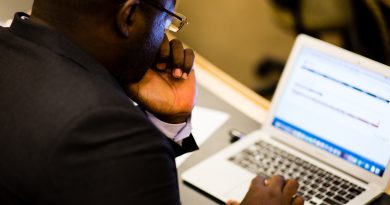Simulating Clinical Encounters in an Occupational Therapy Class
Megan Gately, a Lecturer in Occupational Therapy, brought a unique challenge to the 2016-2017 Instructional Technology Exploration Program (ITEP) offered by Tufts’ Educational Technology Services — she wanted her students to get experience in telehealth.
You recently explored the use of web conferencing and video annotation software in order to support the learning goals of your course. What technologies did you use and in what ways did you believe they would support your learning goals?
I asked graduate students in my Occupational Therapy Practice for Older Adults course to record videos simulating a telehealth clinical encounter with a geriatric patient. Students used Zoom to record the videos and MediaSpace to upload and annotate their own videos. Students then viewed each other’s videos and provided comments. The technology provided students with a 360-degree perspective on their own burgeoning clinical skills, as it offered them a chance to participate in a simulated clinical session of their own creation, and then to critically assess their own and their peers’ performance. It also allowed them an experiential learning opportunity for a growing area of OT practice—telehealth.
Telehealth and telemedicine, in which patients and providers are at different locations, is currently expanding at a rapid pace, and yet, there are few formal studies that explore OT interventions that are conducted in a telehealth format, and research related to telehealth for geriatric clients is even rarer. The technology allowed students to explore potential pitfalls and opportunities of this growing area of practice, while also enhancing their clinical reasoning and observational skills.

Two tools available in Canvas, called My Media and Media Gallery enable faculty and students to upload and share video for class-related activities, including assignments and discussions. Learn more . . .
What worked well, and what would you do differently?
Without our dedicated TTS support for this project, David Grogan, this assignment would not have happened. David explored multiple programs that would meet our technological needs, after asking thoughtful and detailed questions about the assignment. In that process, he brought his own experience in other programs to bear, offering useful suggestions that ultimate strengthened the assignment. David was available throughout the development, execution, and post-assignment phase, and was consistently professional, kind, and supportive of my goals. He also created detailed instructions for students, who overwhelmingly reported that that the Zoom and MediaSpace programs were easy to use. The only issue we had was that some students chose to have grandparents or other older adults as their mock “clients,” who had difficulty downloading the software or navigating the technology during the encounter, in part because of a lack of technological expertise. This was actually an incredibly valuable learning opportunity, however, in that these issues are exactly the kinds of barriers currently facing older adults in use of telehealth. In the future, I would consider additional supports for the “client” or non-student user in the equation. There was only one glitch in uploading videos to MediaSpace, which was less of a technology issue and more of an administrative one (the student was added to the class roster after the MediaSpace for the class was created).
How did you assess the impact of this activity?
Students completed a reflection about their experience of this assignment, with many sharing valuable insights about their own skills as a practitioner as well as how this assignment positively influenced their thoughts about how to use telehealth in their future practice as OTs. Students also completed a brief anonymous survey of their experience specifically with the technology, rating the technological aspects of the assignment as “not difficult at all,” and the written guidelines that David created for creating and uploading the videos as “very effective.” Only two students reported wanting additional guidance on setting up the audio, which could be added to future instructions.
What are some lessons learned that you might share with others?
Ironically, I am not a “tech person,” so I was initially very unsure of whether the assignment would work, and concerned about the potential burden of asking students to use technology outside the classroom, without my supervision or support. But with the detailed instructions, all students successfully completed the assignment, and had positive things to say. I also was extremely pleased to learn that Tufts provides tremendous support around integrating technology into the classroom, and would highly encourage other faculty to work with Educational Technology Services for help in developing and successfully executing assignments that use technology. If you are not sure where to start, reach out to a staff member for ideas and suggestions, as they are knowledgeable and willing to help.
What are you interested in exploring next as part of your teaching?
I want to continue to offer this assignment to my students, and perhaps more formally assess their experience as a learning outcome and a way to influence OT education more broadly. I would also like to integrate this kind of assignment in other classes that I teach, in that it was so well-received and clearly so valuable to students’ learning.

